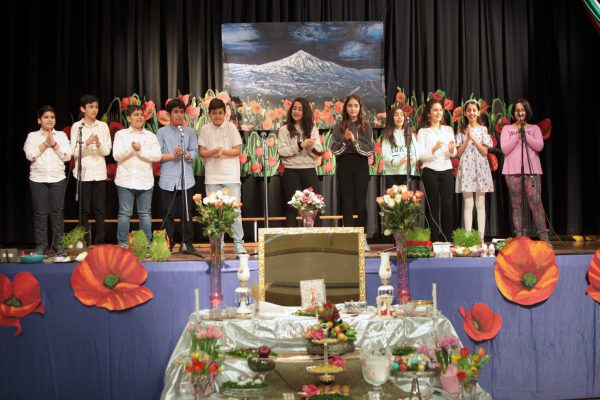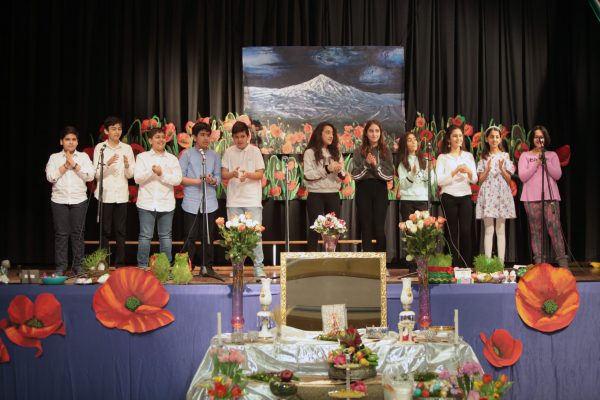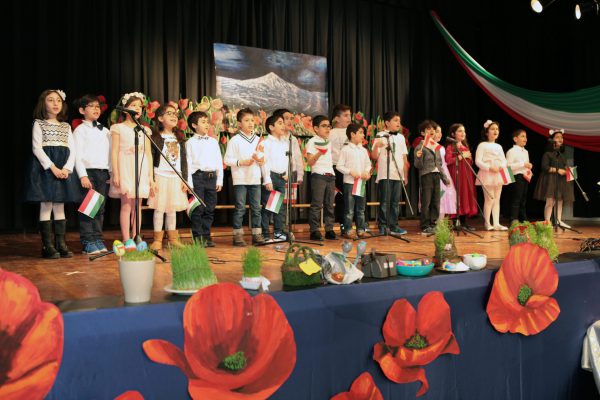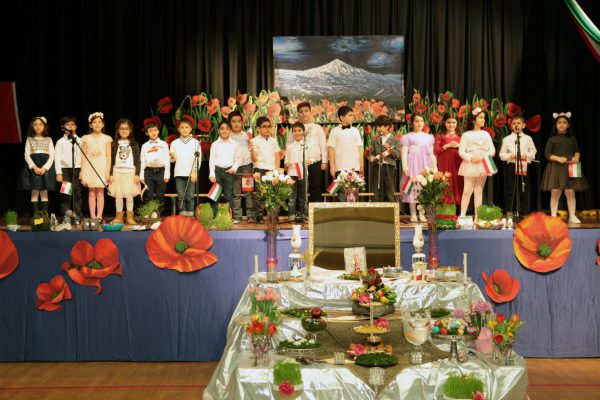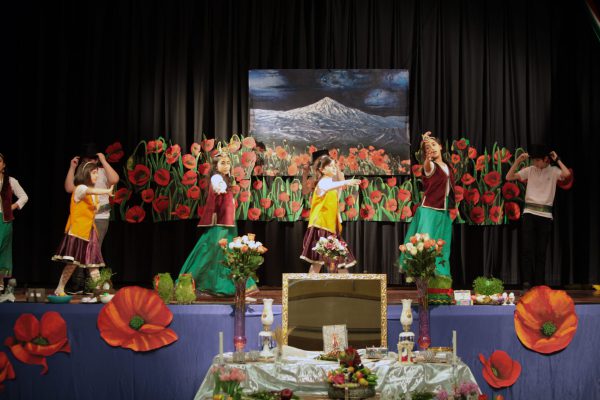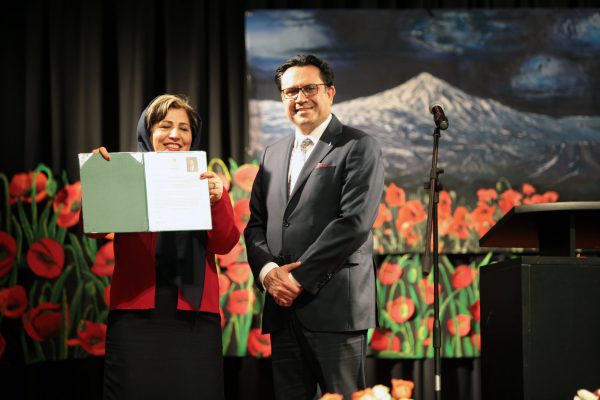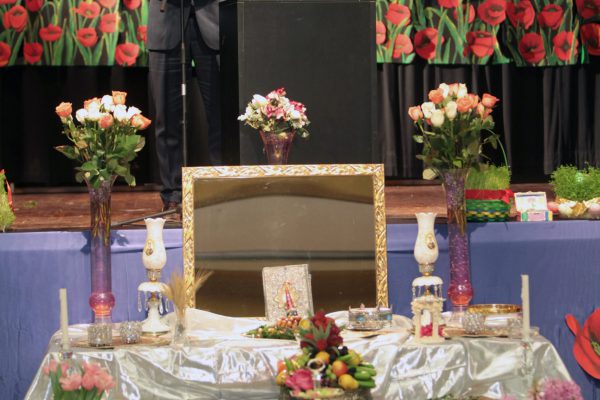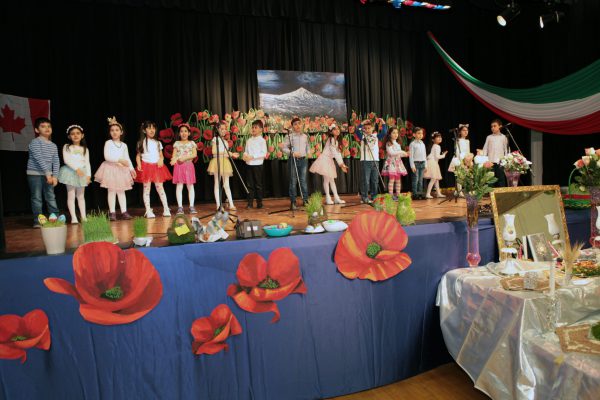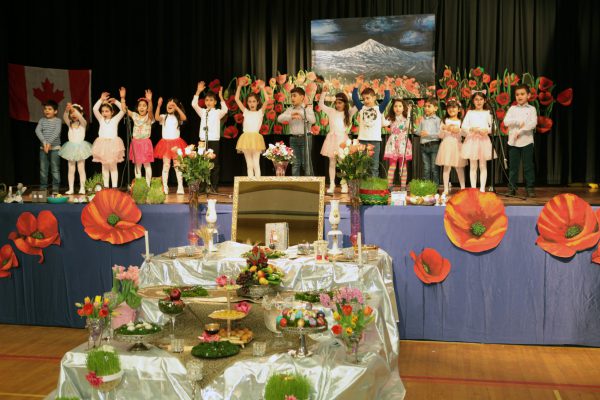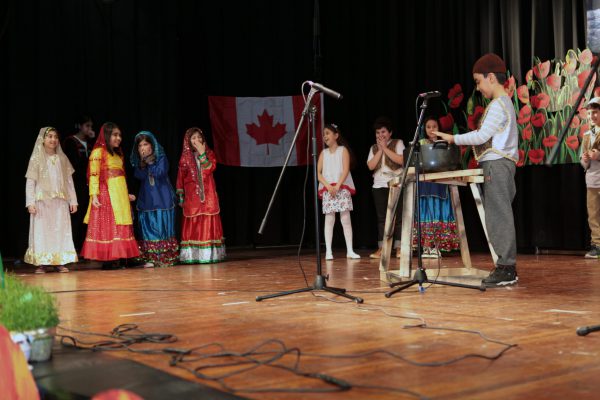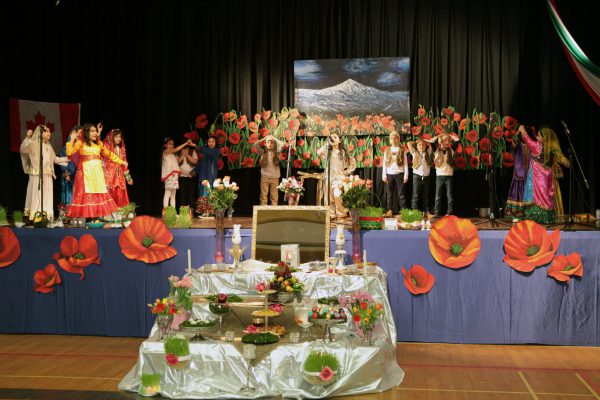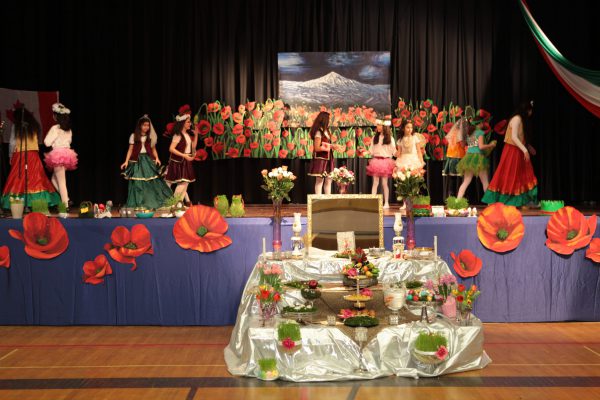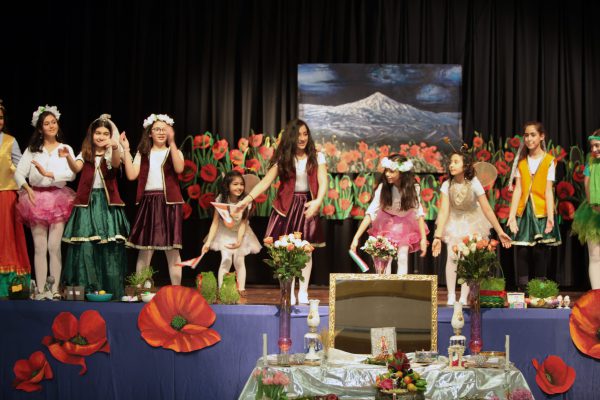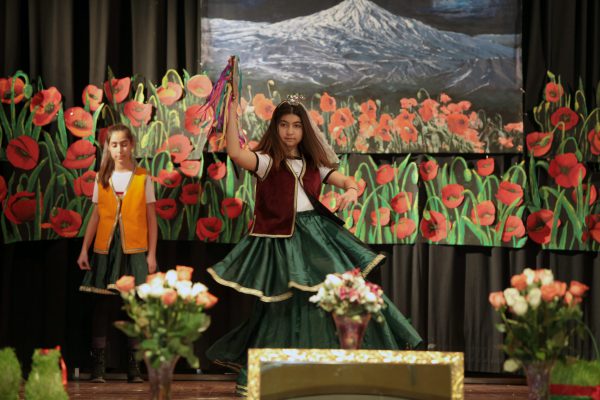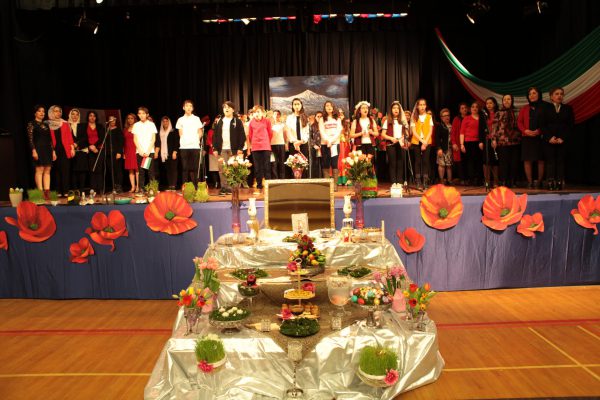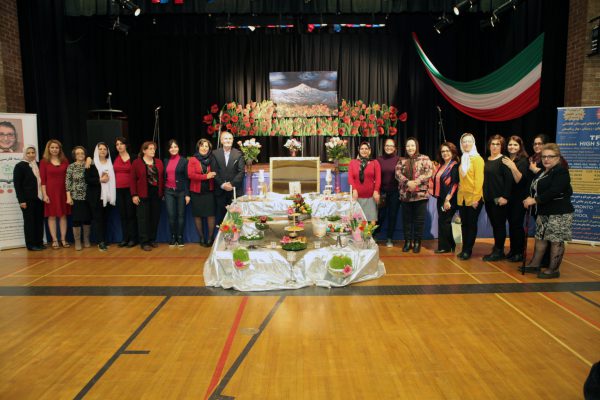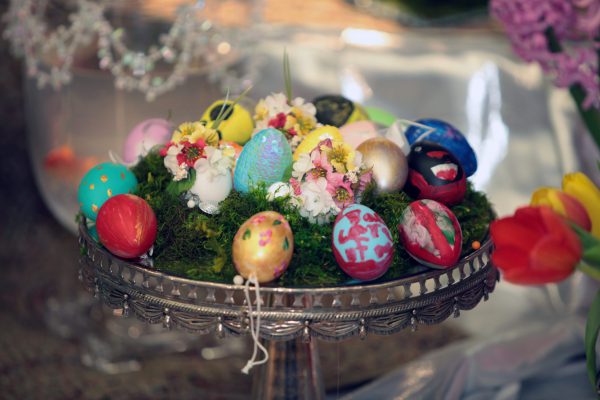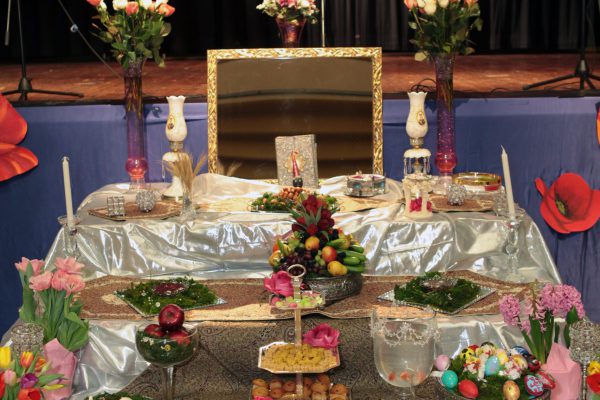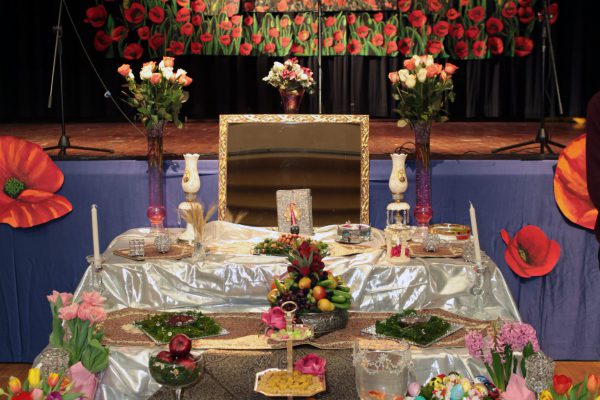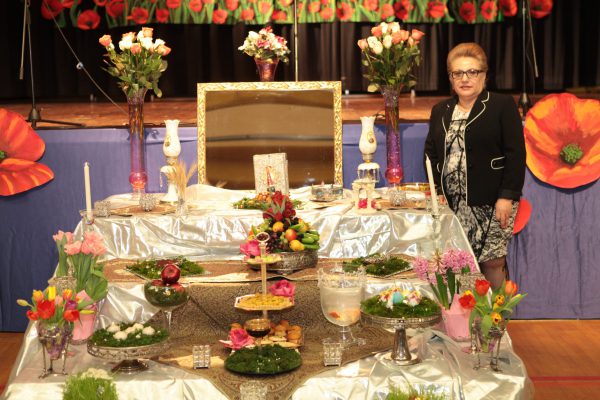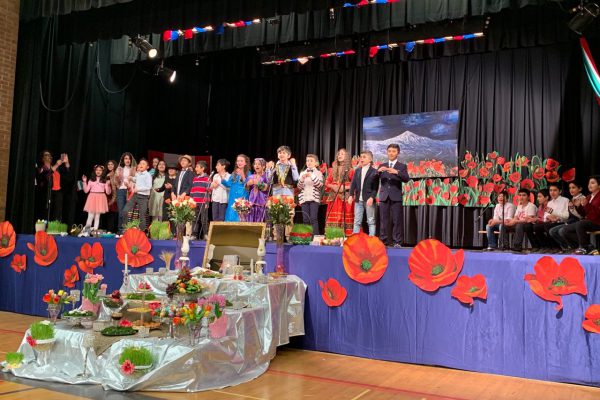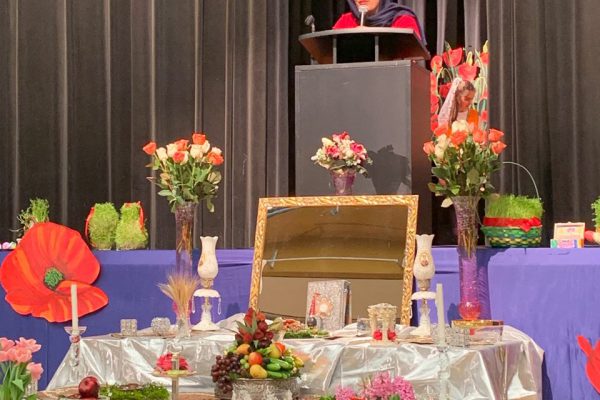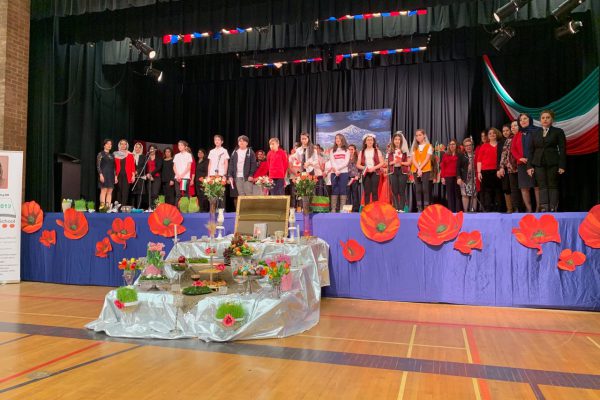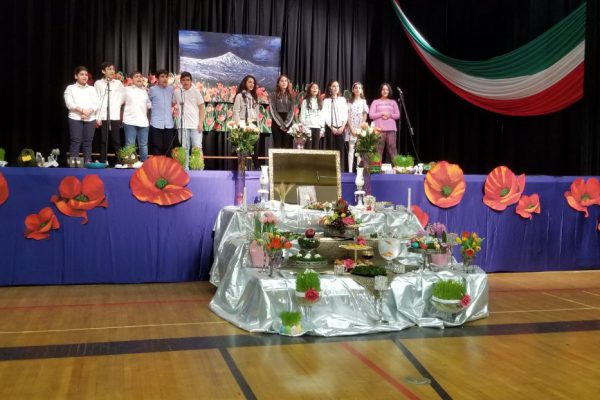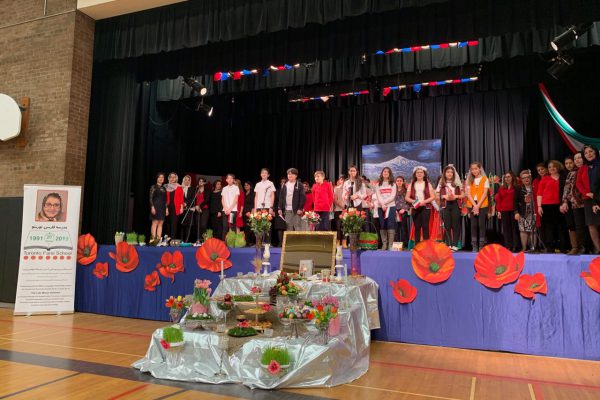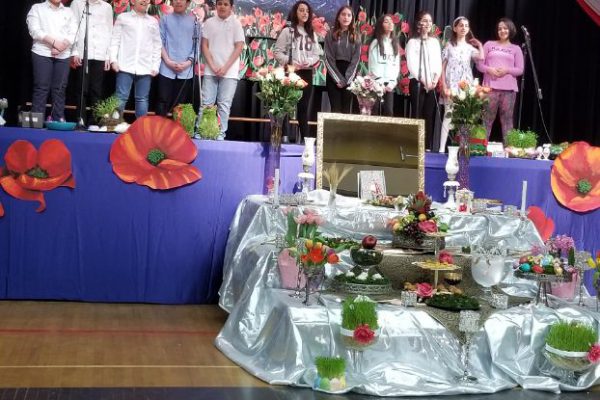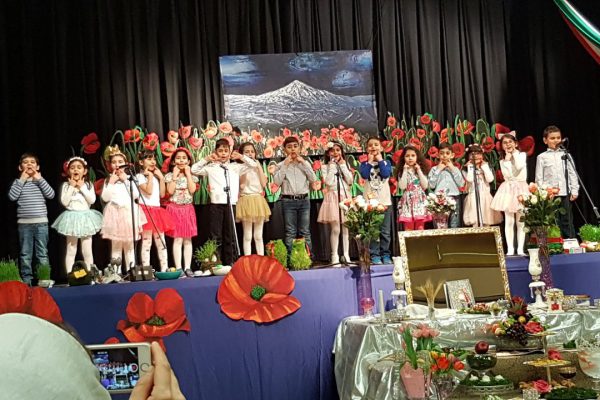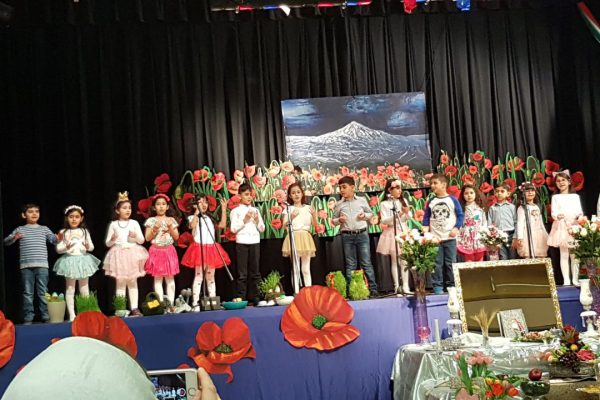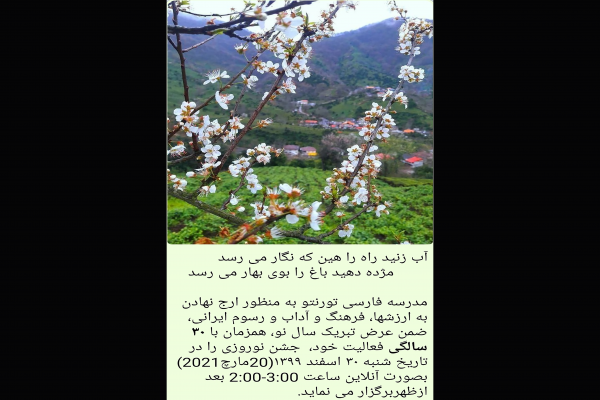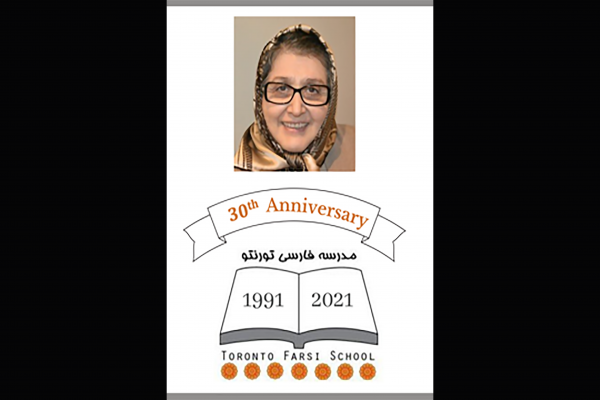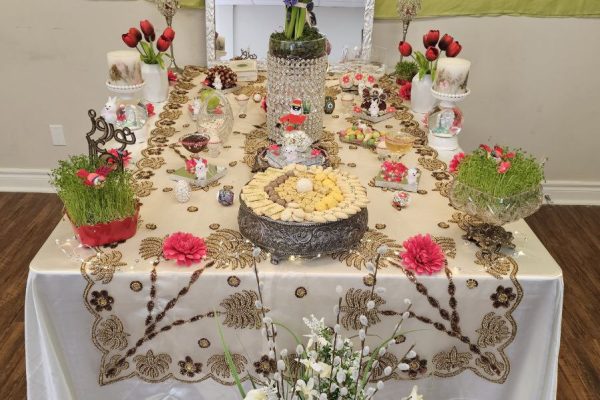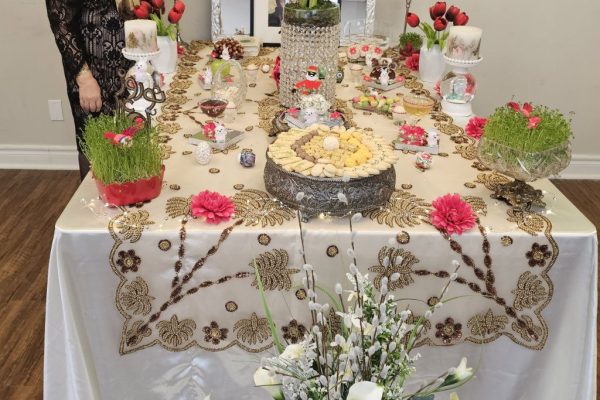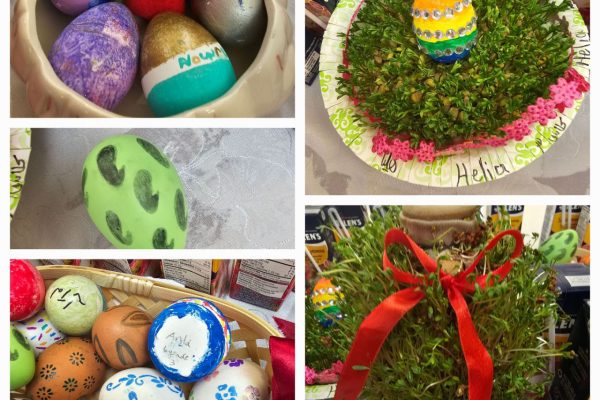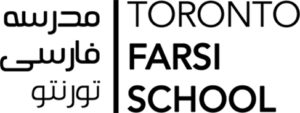
Nowruz Celebration of Toronto Farsi School
At Toronto Farsi School, it is our belief that if children are made aware of the richness and significance of their Persian heritage and its contribution to society, then this knowledge will give them the confidence to be upstanding Canadian citizens who are respectful of the cultural diversity around them.
Students who attend Toronto Farsi School, from a range of ethnicities, will collaborate to perform dances, theatre and musical pieces related to the customs of the ancient celebration of Nowruz across many Eastern countries. Event Coordinators are volunteering to organize the materials needed for each performance such as outfits and props, and to run lunch and afterschool practices. They will also prepare informative workshops about the history of the event to present to attendees in English, French and Farsi. Other volunteers are assigned to tasks for the day of the event including: setup and clean-up, distribution of snacks, stage preparation, decorations etc. We expect the event attendance to be 700 guests (including students, parents and members of parliament) based on the past 12 years’ turnout and growth.
We aim to bring together Canadians of different cultural backgrounds and ages to celebrate a joyous event that promotes positive societal values. Primarily, the event is intended to encourage children and youth attending Toronto Farsi School to embrace Canadian culture, with a strong understanding of their own cultural backgrounds that they develop by preparing the day-long event.
Toronto Farsi School has been established as a Persian (Farsi) language, literature, and cultural centre for 28 years, beginning in a single classroom and steadily growing to a full sized school with approximately 300 students registered annually. However, the Nowruz event is unique because it is a multicultural celebration that brings together Canadians of diverse backgrounds who share a common new year date on the first day of Spring celebrated for over 3000 years. The Parliament of Canada passed a bill to add Nowruz to the national calendar of Canada in 2009 and recognize that it is celebrated by communities such as Persian, Kurdish, Afghan and Turkish. Our organization engages with families as they send their children to the school throughout the year and during Nowruz we have the opportunity to engage with a broader community. Specifically, our enrollment of 300 students helps to bring together around 700 attendees each March who either celebrate Nowruz or are interested in learning more about its origins at our event. We use our daylong event to feature performances and organize workshops, created by our students and volunteers, in order to build mutual connections between the attendees who may or may not be familiar with the commonalities shared by many countries as they celebrate this special time.
During the celebration it becomes evident that many of the symbols of Nowruz representing values such as positive growth, health and wealth are shared by other Canadians during their respective celebrations of a new year. Nowruz is celebrated in many countries including Iran, Tajikistan, Azerbaijan, Afghanistan, Kazakhstan, Albania, Turkmenistan, Uzbekistan, and Georgia. At our organization, we use this event as a platform to connect children of various backgrounds living in Canada with a common celebration of the Nowruz event. The performances feature traditional dances and art originating from backgrounds such as Turk, Kurd, Persian and Afghan which have all become an integral part of the Nowruz celebration. Music choices and time allocation for performances throughout the event are decisions which are made carefully ensuring that the customs of all the participating countries are included.
People of diverse cultural backgrounds, races and religions live across Canada. One of the driving forces for parents to immigrate to Canada is to provide their children the opportunity to have a prosperous future in a nation which respects core democratic values. In order to contribute to the Canadian mosaic it is important to learn about the customs belonging to one’s country of origin as well as the ways in which our backgrounds can help us positively contribute to Canadian society. More specifically, at Toronto Farsi School it is our belief that if our children are made aware of the richness and significance of their heritage and the contribution it has made to society then this knowledge will give them the confidence to be strong and upstanding citizens, proud of where they come from and respectful of the cultural differences in their environment. In the case of Nowruz, it ties together the history of many different cultures and allows children to use a joyous time to learn about their cultural identities.
Leadership Development
The youth that help prepare and execute the event are able to develop their leadership skills by assumingroles during the preparation and performance stages. Specifically, each performance has older students who act as mentors and help the younger students practice each week. This allows the students to develop planning skills and ultimately see the result of their hard work on the celebration day. By encouraging our students to learn about the unique ways different nationalities celebrate Nowruz in Canada, they become informed leaders who can address racism and discrimination in society. These students not only increase their own sense of awareness of Canada’s growing diversity but also engage in these activities in a hands-on way allowing them to become personally invested in these vibrant cultural customs. This can act as a catalyst encouraging them to start initiatives within their communities outside of Toronto Farsi School, and ultimately stand up to racism and discrimination with an appreciation for diversity.
Change in Attitudes
For the older stakeholders who are the attendees of the event (parents, grandparents, friends of students) this event allows them to shift their perception of Nowruz. It is natural that the members of each cultural group associate Nowruz with their own customs and values but this event allows the older attendees to see that there are in fact many commonalities amongst Canadians regardless of their background. By purposefully organizing performances and workshops that highlight various nationalities the audience can begin to see that the same event can be celebrated in different ways but still spread the same positive messages of a “new start” of positive change in one’s life.
Given the large turnout at our event, the attendees come from a variety of diverse backgrounds expanding each year. In terms of the performances and workshops that we organize we include the following cultural groups:
Afghan
Arab
Azeri (Azerbaijan)
Iranian
Kurdish
Turkish
The two key stakeholder groups which comprise the communities listed above are the students and attendees (parents, friends etc.)
Students
About 270 of our students are involved in the event directly. Starting in September, the students are placed into groups based on their age group and begin to practice one hour each week on the given performance. The students also assist in other aspects of the event preparation. For instance, when preparing the dances, the outfits and stage setup are key elements of the performance. To ensure positive cultural interactions our staff plan school-wide assemblies where each group shares their performance and its historical significance with other groups. Since each performance has its own cultural and historical meaning the students with a deeper understand of that specific background are able to take on leadership roles and teach their peers. During these activities, older students also become mentors to younger students by providing feedback on how to best express the meaning of their particular performance.
Attendees
For the attendees of the event, the interactions take place during the day of the event (March 16 this year). During the performances the attendees witness how several different cultures celebrate a common holiday. In a more interactive sense, we organize competitions such as “most creative decorative table” where participants bring their own model haft seens, haft mewas etc. and there is a vote to pick the one that creatively incorporates all elements in a small portable display. Each creation is unique because it is representative of the way that specific country celebrates Nowruz and often sparks conversation as we display all contestants designs in the cafeteria.
This event allows recent immigrants to Canada, including children, to interact with other Canadians who have established their lives within this country during a historically significant Eastern celebration. Toronto Farsi School has been established as a language and literature centre for 30 years, beginning in a single classroom and steadily growing to a full sized school with over 350 students registered annually. Norooz has been celebrated for the past 28 years but the growth in interest to participate in the event has lead to the need for more resources. Primary information has been collected from hundreds of teachers, parents and students, through interviews and classroom discussions, who all believe that each year the event has successfully achieved its core aim of promoting intercultural understanding with Norooz as the platform. Children who immigrate have shared that they face challenges in regards to assimilating into Canadian society without losing connection with their cultural background. Starting in 2008, members of Canadian provincial and federal government have shared their support for Toronto Farsi School’s mission through annual speeches during the Norooz celebration. In recent years, Mrs. Kathleen Wynne, Mr. Reza Moridi, Mr. Ali Ehsassi, Mr. Majid Jowhari and Mr. Ahmed Hussen have attended the event and in 2016 we were presented with a letter on behalf of Prime Minister Trudeau recognizing the importance of the event. Given the public support of the Norooz event from members of Toronto Farsi School and also external community members, it has become evident that this event is needed for the local community.
Toronto Farsi School has been established as a Persian (Farsi) language and literature centre for 28 years, beginning in a single classroom and steadily growing to a full sized school with approximately 300 students registered annually. In addition to the Farsi language education, instruction of Iranian-Canadian arts, culture, and family studies have been taken up over the years to promote intercultural understanding. Our faculty alone is comprised of thirty highly qualified and experienced teachers. The Nowruz event, planned by students and staff, is celebrated each year since the establishment of the school reaching a record attendance of 700 in 2016.
Starting in 2008, members of Canadian provincial and federal government have shared their support for Toronto Farsi School’s mission through annual speeches during the event from Mrs. Kathleen Wynne, Mr. Reza Moridi, Mr. Ali Ehsassi, Mr. Majid Jowhari and Mr. Ahmed Hussen.
Each year starting in 2007, Reza Moridi, the first Iranian-Canadian elected to a provincial legislature in Canada, attends the event as a guest speaker who highlights the contributions of Iranians to the Canadian landscape. He also entertains questions from newcomer students and parents from a variety of backgrounds about opportunities to become involved in initiatives to assist with the transition to Canadian society.
On the 25th annual event, Prime Minister Trudeau issued a statement of support recognizing the work that Toronto Farsi School does throughout the year to provide excellent Farsi language education to thousands of youth ultimately ensuring that the Iranian-Canadian students maintain their rich language and culture. Specifically, it was noted that the Nowruz event is a special occasion that not symbolizes not only a wealth of traditions and customs but also enduring contributions made by Iranian communities to Canada’s diversity.
- (416) 850-0649
- (416) 843-3387
- (416) 850-1336
- info@torontofarsischool.com
- 5635 Yonge Street, Suite 206 Toronto, Ontario M2M 3S9
